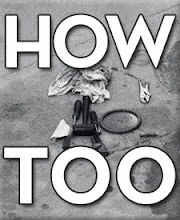
my friend jason hooked me up with this paughco mustang tank. the tank sat really high on the backbone and was at a really steep angle, so i decided to cut out the tunnel and drop the tank down a bit. i also opted to do a frisco style petcock that way i get the most mileage out of the fuel in the tank
in this pic the new tunnel is all welded in, you can see by the discolorization from the welder that i welded the tunnel in with 3/4 in welds. you want to weld with short cool welds and jump around all over the tank or you are going to wind up with a warped tank.
so here all the welds have been ground and i have the frisco style petcock bung welded in. when weldinging in the petcock bung i used sil-bronz rod so that it flows in the gaps better making for a better seal and lower heat to reduce the possability of melting the 1/4 npt threads in the bung. i machined some blind 5/16 x 18 bungs that i welded in the tunnel for mounting the tank to the back bone.
here is my good friend jeff hepworth drilling the holes in the backbone to mount the tank bungs. jeff whipped up som bungs by taking some 5/8 4130 tubing and welding on caps he cut out of 1/8 in strap with a 3/8 in hole drilled in the center these will get welded into the backbone and the fasteners will hide in the bung and retain the tank.
this is how it looks with the holes drilled and deburred.
jeff and i bolted the backbone bungs to the tank then dropped the tank on the bike. after making sure the tank is sitting on straight i placed a few sturdy tacks on the mounting bungs. remove the tanks making sure not to bump your parts out of alignment and weld it up solid











































